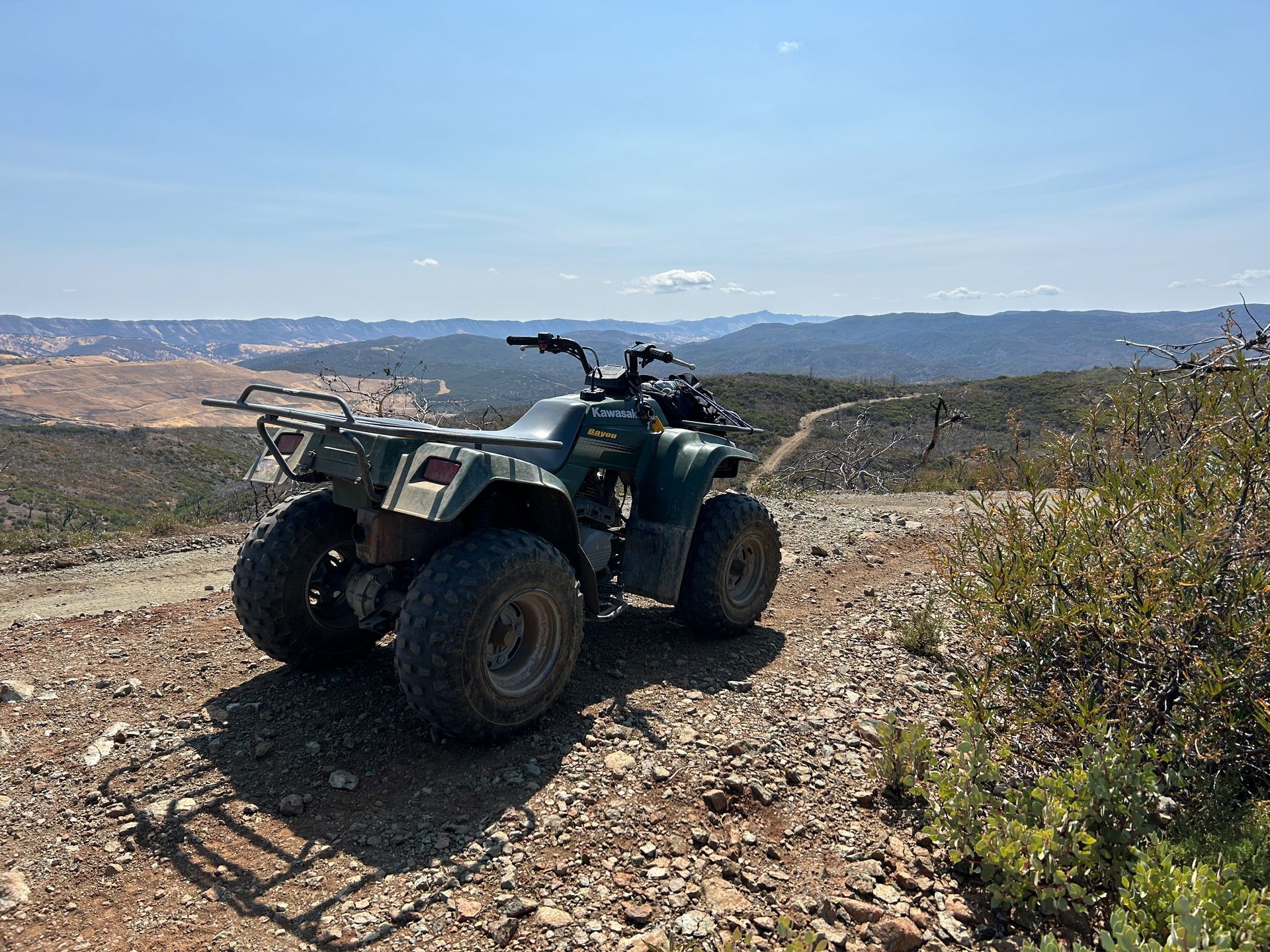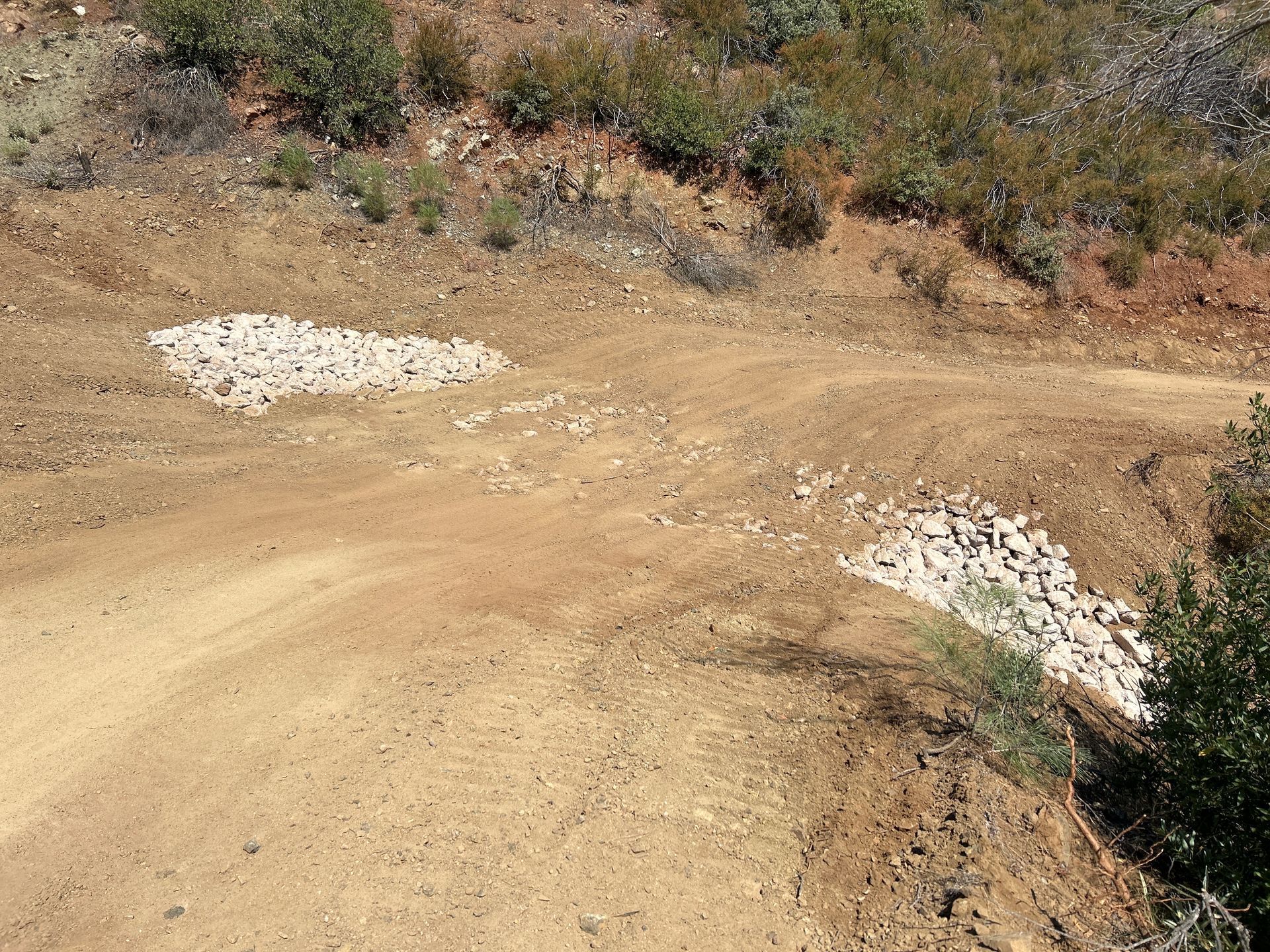Tuleyome Tale: The Importance of Trail Work at Knoxville Management Area

OHV on Dunnigan Hill Road with Berryessa Peak in the background
Located between Lake Berryessa and Clear Lake is the Bureau of Land Management’s Knoxville Management Area. This area, which is included in Berryessa Snow Mountain National Monument, is popular with off-highway vehicle (OHV) users from around Clear Lake to the Sacramento region and San Francisco Bay area. The 17,700 acres is fee-free, making it very attractive to all users - OHV riders, hunters, mountain bikers, and campers.
Knoxville, like the rest of the Berryessa Snow Mountain National Monument region, has been home to native people for many thousands of years. What we see as OHV trails today, were likely footpaths that the Patwin, Pomo, Miwok, and other people used as trade and travel routes. Some of these may then have been used by miners looking for mercury and other materials before being turned into the roads and trails that exist today.
Knoxville Management Area has been impacted by recent wildfires, including the 2020 LNU Complex Fire, and subsequent rains. Fire is a stressor on the ecosystem and the following rains can cause significant erosion, limiting regrowth. Trails have been closed in Knoxville to allow vegetation a chance to regrow in burned areas, to repopulate fire breaks, and to repair the trails. Bringing these communities back is key to decreasing erosion, which protects Knoxville’s natural and cultural resources. Fire is a common part of this cycle, just not to the degree we are seeing recently.
Fire-caused vegetation loss and improperly developed and constructed roads has led to increased erosion throughout Knoxville Management Area and downstream water quality has suffered. Tuleyome is leading a pair of projects to improve recreational experiences and access while reducing erosion and improving water quality downstream. Rolling dips, armored crossings, and other measures will increase the durability of trails while preventing water from becoming channelized and creating gullies along the trail.

Armored crossing on Dunnigan Hill Road
Placing rolling dips at regular intervals decreases the amount of water flowing on the trail, decreases the speed of flow, and lessens the erosive force. Armored crossings, rocks added to the trail bed where water flows across the trail, stabilize the soil and keep water flowing across the trail instead of following it. These can replace culverts which may become plugged by debris, melt, or collapse due to age.
Native Americans have used what is now Knoxville Management Area for thousands of years. Because of this, there are cultural resources scattered throughout the area. Local tribes have been consulted and are working with Tuleyome, BLM, and the contractors to ensure that these resources are respected and preserved.

Rolling Dip on Dunnigan Hill Road
Dunnigan Hill Road, from the northern entrance to Hunting Creek Camp, and Hunting Creek Road, from Hunting Creek to the intersection with Devilhead Road, is open for OHV use. The four-mile Cedar Creek Trail remains closed to allow the newly added structures to solidify.
More information about the projects is available on Tuleyome’s website. Visit the Bureau of Land Management website for more information about Knoxville Management Area.
-Nate Lillge (nlillge@tuleyome.org)
Tuleyome Adventures and Engagement Director
Certified California Naturalist
RECENT ARTICLES






